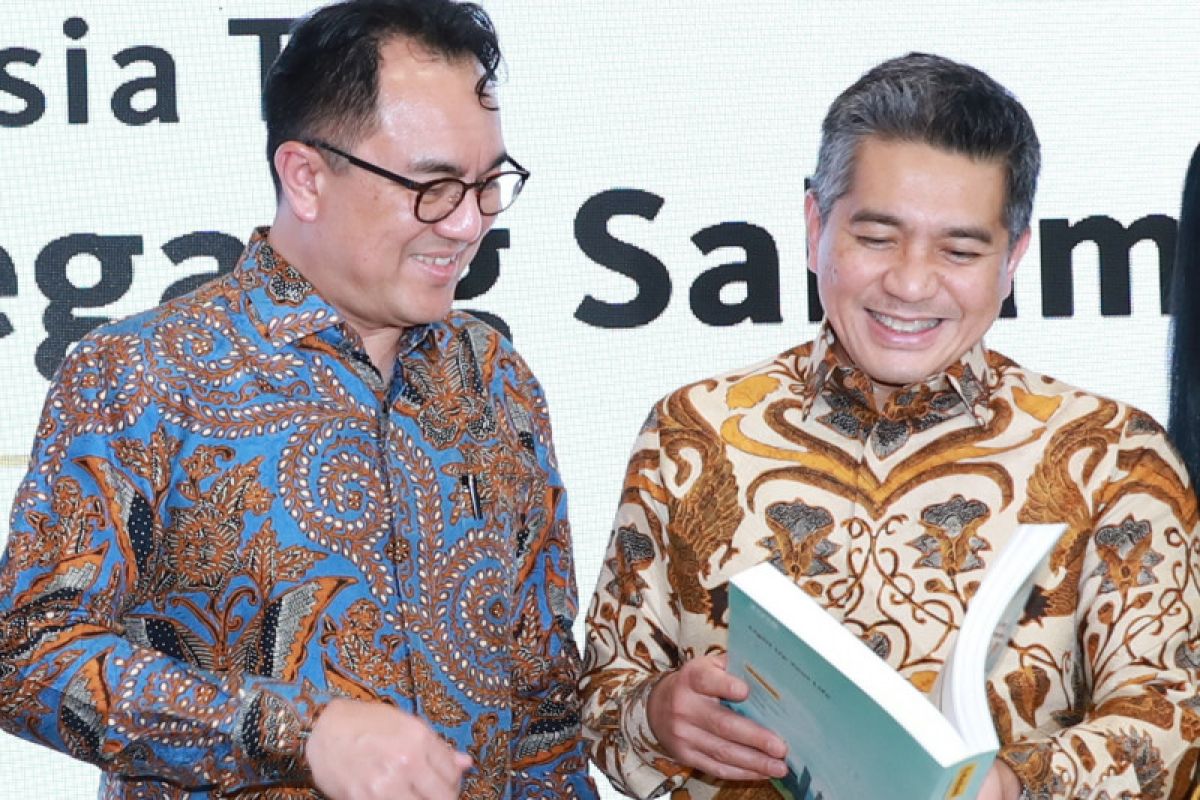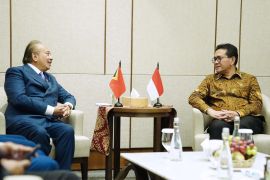- Profit After Tax and Minority Interest (PATAMI) increased 29.7% to a record Rp538.2 billion
- Fee based income improved 16.0% to Rp597.6 billion
- CASA ratio improved to 37.4% contributed by 18.1% growth in savings accounts
- Net Interest Margin (NIM) improved to 4.96%
- Overhead cost effectively managed with only a 1.2% increase
- Strong capital position with Capital Adequacy Ratio (CAR) at 20.6% and total capital of Rp26.2 trillion
The Bank saw healthy growth of 16.0% in fee based income to Rp597.6 billion in March 2020 compared with Rp515.0 billion in March 2019, mainly from Global Market related fees, bancassurance, investment, and e-channel transaction fees.
Maybank Indonesia was able to improve its funding profile as reflected by its improved CASA ratio from 31.7% in March 2019 to 37.4% in March 2020, in which savings accounts increased 18.1%. The improvement in CASA was a result of the Bank’s strategy to reduce higher cost of funds which has been implemented since the second semester of 2019 to manage the Bank’s liquidity surplus which was built to mitigate unforeseen risks during the first half of the year. The Bank’s digital banking platform, M2U also contributed to the improvement in CASA ratio as it provides a simple yet speedy account opening process. The Bank’s Loan-to-Deposit Ratio (LDR–Bank only) was at a healthy level of 89.7%, while its Liquidity Coverage Ratio (LCR-Bank only) stood at 154.2% as of March 2020, well above the mandatory minimum of 100%.
Total loans dipped 9.5% to Rp122.9 trillion as the Bank continued to maintain its conservative stance and align its portfolio growth with its risk appetite and posture which has been further tightened given the current pandemic situation. As of March 2020, Global Banking loans declined 1.7% to Rp35.3 trillion, while Community Financial Services (CFS) Non-Retail Loans was 17.5% lower at Rp46.6 trillion and CFS Retail loans declined 5.6% to Rp41.1 trillion.
Net Interest Margin as at March 2020 was 4.96% or 14 bps higher compared with 4.81% in March 2019. The Bank will continue to maintain discipline in pricing and active funding management to better mitigate pressures on margin.
Overhead costs were managed effectively with a marginal 1.2% rise to reach Rp1.6 trillion in March 2020 as a result of continued cost management initiatives across business lines and support units.
The Bank’s non-performing loan (NPL) level stood at 3.6% (gross) and 2.2% (net) as at March 2020 compared with 2.9% (gross) and 1.7% (net) as at March 2019. This was mainly due to reduced loan balances as of March 2020. Gross Impaired loans ratio meanwhile, was at 5.04% as at March 2020 compared with 3.29% as at March 2019. The higher impaired loan ratio was mainly due to the full implementation of the new accounting standard PSAK 71 or IFRS 9 in January 2020. The Bank continues to take a proactive stance to assist customers facing challenges whilst maintaining a suitable risk posture to safeguard asset quality.
The Bank’s capital position remained strong with its Capital Adequacy Ratio at 20.6% in March 2020 compared with 18.7% in the previous year and total capital of Rp26.2 trillion in March 2020 compared with Rp25.9 trillion in March 2019.
Sharia Banking
Sharia Banking’s total financing as at March 2020 was at Rp24.4 trillion compared with Rp24.7 trillion last year. However, there was positive momentum in the first three-months and Sharia Banking saw its financing grow by Rp398.0 billion. Sharia Banking’s Kafalah financing has started to show promising growth; including the Kafalah portfolio, total financing reached Rp25.8 trillion in March 2020. Sharia Banking’s total asset as at March 2020 was, however, marginally lower by 2.6% at Rp31.8 trillion compared with the previous year.
Meanwhile, total customer deposits recorded a growth of 2.4% or Rp599.7 billion increase in the first three months 2020. Sharia Banking’s continuous focus on building an efficient funding base has led to a general reduction of high-cost deposits which led to a profit before tax of Rp109.1 billion and an improved Return on Asset to 2.08% versus 1.36% Y-o-Y.
Sharia Banking continues to strengthen its propositions and demonstrate differentiated capabilities in the market through innovative products such as new hedging feature for corporate and commercial customers, and Sharia–compliant life insurance coverage for MyArafah savings account holders.
Maybank Indonesia’s initiatives to combat COVID-19
The Bank has taken an active role to support the Government in combating the COVID-19 by providing donations of Personal Protective Equipment (PPE) to hospitals across the country and creating a crowd sourcing program through the Bank’s mobile banking platform, M2U to help those who are impacted by the outbreak. The Bank also recently introduced a Savings Account which comes with life insurance coverage for customers affected by Covid-19, aligned with the Bank’s commitment to prioritize customers’ safety and health. Furthermore, Bank has also been proactively engaging with its debtors to better assess the impact to their businesses and offering help as needed.
President Director of Maybank Indonesia Taswin Zakaria said, “In line with the improvement and changes implemented last year, we expected this positive start to the year, with the 29.7% increase in PATAMI in this first quarter. Our fee based income continued to show positive traction, making it our major source of income even as we seek to grow our portfolio selectively during this period. The ongoing global pandemic will probably impact our results for the rest of the year and we need to be vigilant over asset quality. However, we will continue to seize business opportunities especially in the area of digital banking where we can provide innovative financial solutions and user experiences to our customers while we seek to support them in ensuring their businesses remain sustainable.”
President Commissioner of Maybank Indonesia and Group President & CEO of Maybank, Datuk Abdul Farid Alias said, “The transformation measures we have taken over the last years have shown tangible results with strong growth in spite of the extremely challenging quarter that we have experienced. We will continue to remain focused on growing responsibly improving our asset quality, while at the same time prioritising effective management of costs and liquidity. Given the new norm in banking operations that we are witnessing, our Group digital transformation agenda will be accelerated to drive Maybank Indonesia’s next phase of growth.”
Subsidiaries
PT Maybank Indonesia Finance (Maybank Finance) continued to record a healthy performance with profit before tax increasing by 8.2% to Rp121.2 billion for the first quarter 2020. Maybank Finance remains focused on ensuring sound asset quality management with its NPL trending lower to 0.26% (gross) and 0.15% (net) as of March 2020 compared with 0.34% (gross) and 0.18% (net) in the previous corresponding period.
PT Wahana Ottomitra Multiartha Tbk (WOM)’s profit before tax rose 3.1% to Rp57.3 billion despite a 2.6% reduction in its total consumer financing (stand alone) to Rp7.2 trillion in March 2020. This was due to its strategy to focus on quality dealers which resulted in better portfolio quality. WOM’s multipurpose financing (multiguna) business also continues to deliver healthy growth. WOM recorded improved asset quality as reflected by the decline in NPL level to 2.12% (gross) and 0.68% (net) from 3.18% (gross) and 0.88% (net). The current Covid-19 pandemic poses challenges for WOM’s business for the remainder of the year. WOM will be extra cautious for any new business going forward, and will intensify its monitoring and collection efforts over these next few months.
Reporter: PR Wire
Editor: PR Wire
Copyright © ANTARA 2020












